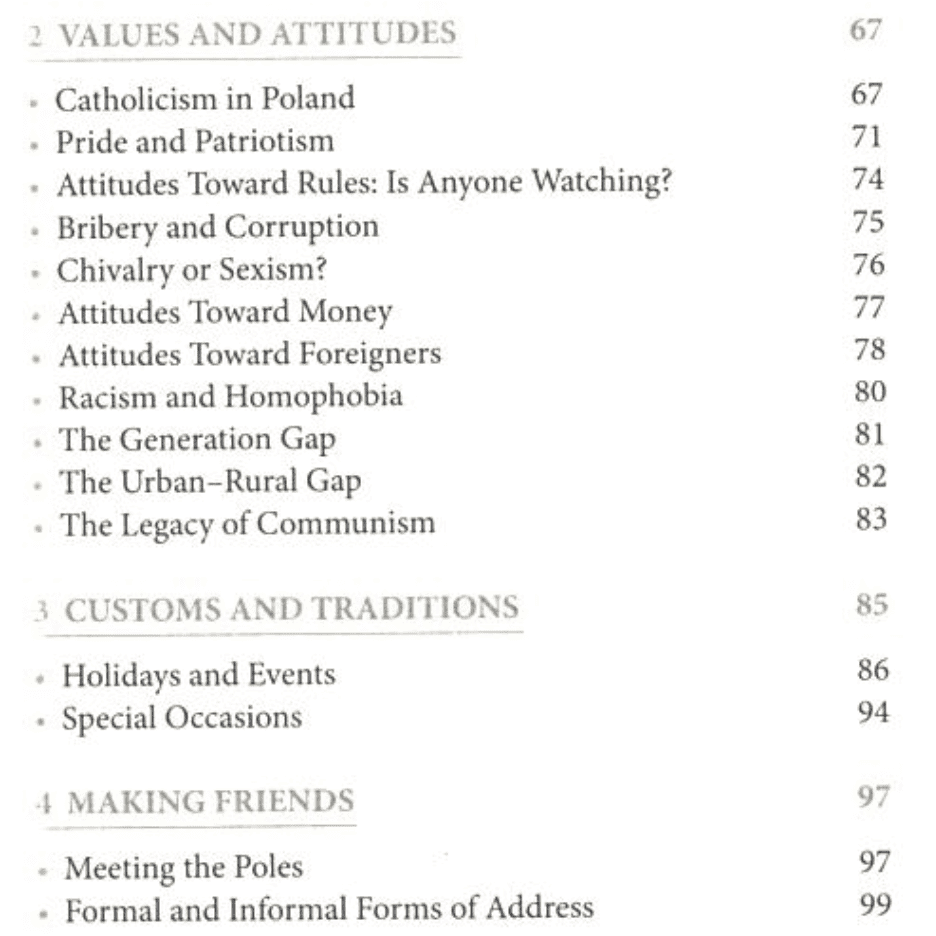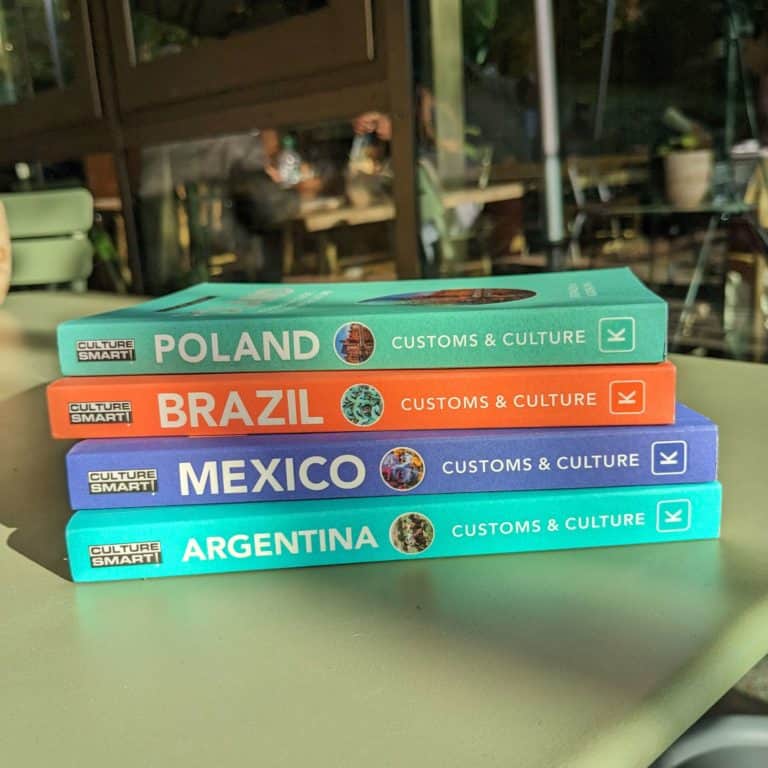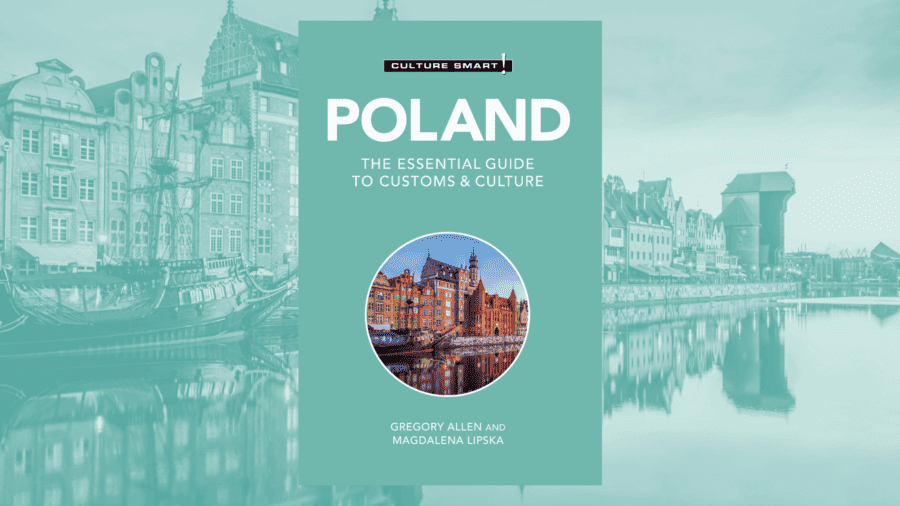Note: This book review of Poland – Culture Smart! is sponsored. Although I have received compensation to write this article, all opinions expressed are my own and based on my genuine experiences. I only recommend products or services I believe will be beneficial to my readers.
_________
I’m delighted to announce that I’ve come across a must-read book before visiting Poland for the first time. If you’re looking for a compelling read that strikes a balance between being overly general and unnecessarily detailed, Poland – Culture Smart!: The Essential Guide to Customs & Culture has you well and truly covered. Brief, yet thorough, and with just the right amount of insight into everyday life in modern Poland, Poland – Culture Smart! is a cultural guide that does things differently to conventional travel guides. Let’s find out how.
An introduction to Poland – Culture Smart!
Over the past 20 years, Culture Smart! guides have been helping travellers be a lot more than mere tourists. These guides are skilfully written by those who know their countries like the back of their hand. From journalists to diplomats, and professors to long-term expats, the authors of Culture Smart! guides have seen it all in the nations they so masterfully and enthusiastically promote.
As for Poland – Culture Smart!, authors Gregory Allen and Magdalena Lipska have the weight of intercultural and cross-cultural experience behind them. Allen lived and worked in Poland for 12 years. Intriguingly, his doctoral thesis examined the perceptions of expatriate managers based in Poland. Lipska works in Warsaw as an interpreter, translator, and tutor in English and Japanese. She has travelled extensively and even lived in Japan.
Glancing at the sheer breadth of the book’s contents, it’s clear that the authors did not aim to churn out a typically conventional “what to see and do in Poland” travel guide. Of course, there is your usual geographical overview, information related to getting around Poland and also a brief history of the country. However, the authors’ main focus is to equip travellers with vital information pertaining to the values, beliefs and attitudes of Polish people. Therefore, there are sections on topics ranging from chivalry to patriotism, and official forms of address to Polish business culture. Admirable breadth indeed. There really is something for everyone in Poland – Culture Smart!

Although the authors point out that Poland has “turned a corner from its troubled past” (p.8), it is commendable how they aren’t so gung-ho to praise the country for its exceptional development. Clearly, Poland has come a long way in recent years in terms of its infrastructure and growth of a modern economy. However, the country is “still in transition from its recent Communist past” (p.8). Therefore, visitors do need to be well-informed, considerate and open-minded as they move around the country, deal with small-scale bureaucratic matters or make small-talk with locals.
All in all, reading Poland – Culture Smart! will help you to make sense of what makes people tick, the values they live by, and the type of behaviour that will be repaid with genuine goodwill and hospitality.
What makes Poland – Culture Smart! a must-read book before visiting Poland?
There are countless reasons why you should grab a copy of Poland – Culture Smart! before travelling to Poland. Here are the most outstanding features of the book:
1. How Poland’s history has affected the mindset of generation upon generation of Polish people
“From their checkered past has come the Poles’ indomitable spirit. They have lost many battles but not the war, and their vibrant culture and economy are proof of this.” (p.17)
Poland – Culture Smart! is certainly not a history book. However, the authors have devoted a significant chunk of the book to Poland’s history. The 30-page section on ‘A Brief History’ of Poland precedes a section on ‘Government and Politics’, which chiefly covers how the Republic of Poland became a parliamentary democracy in the 1990s. To round things off in chapter 1, the authors assess Poland’s role in the European Union.
From Piast dynasty rule in the ninth and tenth centuries, right through to everything that Poland went through in the twentieth century, Allen and Lipska write with admirable brevity and eloquence. However, not for one moment do the authors gloss over key events and periods in Polish history. This is a short yet detailed history of a country that’s seen its language, culture, religion and traditions suppressed in various periods of its existence.
Connecting the past with the present
Describing key events and periods in Poland’s turbulent history with such passion and brevity is one thing. Yet, Allen and Lipska shine most when it comes to recognising and continually reiterating the extent to which the constant bombardment of suppression over the centuries has shaped the mindset of Poles and the Polish sense of identity. Let us all honour the Poles’ “indomitable spirit” (p.17). Poland’s vibrant culture and economy prove that Poles do not take defeat lying down. Even though Poles have lost so many battles in the past, there’s a sense that the nation and its people have triumphed in terms of the war.
From the Tatar invasions beginning in 1241, to The Deluge (potop) from 1648 when Poland was attacked simultaneously by Swedes, Tatars, and Cossacks, not to mention the devastation wreaked by two world wars, one of the main takeaways from Poland – Culture Smart! is that Poles are inherently resilient.
All in all, the numerous wars, ever-shifting borders, foreign occupation, communist rule and the presence of the Catholic Church have all significantly contributed to the moulding of Polish culture.
Catholicism in Poland – past and present
Christianity came to Poland in 966 with the baptism of the Piast prince Mieszko I. The Polish Church was established in 1000. In 1025, the first Polish king, Bolesław I, “the Brave,” was crowned, thus establishing the Kingdom of Poland. Given that the introduction of Christianity to Poland is symbolically connected with the founding of the Polish state, it’s little wonder that the church went on to exert a great deal of influence over Polish society even until the present day.
Allen and Lipska note the extent to which “Western European visitors to Poland may be surprised to see how strong a role the Church continues to play in the day-to-day lives of many Polish people.” (p.68). One only has to witness the broad demographic spectrum which congregates for mass on Sunday mornings and throughout the week. Nevertheless, the authors note that the Church has been declining in popularity in recent years, particularly among the younger generation. Their discontent is often ascribed to the political ties between the Church and certain political groups.
It’s a point I will cover in greater detail in the next section, but one of the main strengths of Poland – Culture Smart! is the recency of information contained within the book. For example, in connection with the Church, we learn that the dwindling number of candidates applying to seminaries caused the Vatican to close down around twenty of these colleges. (Allen and Lipska, 2023, p.69).
Fast forward to the mass “Women’s Strike” of 2020-21. Protests broke out all around Poland after the ruling PiS (Law and Justice) Party tightened the law on abortion. Naturally, the Roman Catholic Church supported the new legislation, leading to a backlash against its political interference.
Overall, Allen and Lipska successfully represent contemporary Poland as it really is. Yes, the Catholic Church in Poland may have witnessed harmful backlashes and a dramatic fall in church attendance. Nevertheless, the authors point out that “religion and national culture in Poland … [are] so intertwined”. (pp.70-71). This assessment aptly describes the status quo when it comes to religion and national culture:
Behaviour that a visitor might initially attribute to deep religious conviction may in fact be simply an expression of Polish cultural norms. Religious celebrations are a perfect example of this. Over Easter and Christmas the churches are bursting at the seams, the streets empty, and after Mass everyone rushes back to the family home for a traditional home-cooked meal washed down by a few shots of vodka. (p.71)
Pride and patriotism among Poles
To round off this section, I’d like to mention Allen and Lipska’s thought-provoking take on pride and patriotism among Poles.
We’ve already established that Poland has had its fill of war and foreign domination across history. The fact that Poland has been put through the wringer over the centuries, and is now “a modern, increasingly prosperous, Western economy – is a source of pride for poles.” (Allen and Lipska, p.71).
However, the authors go on to mention that Polish attitudes towards their own nation “are complex and may seem contradictory to foreigners”. (p.71). If you immerse yourself in Polish culture, you will soon find out that Poles like to mock their country and laugh at themselves. Nevertheless, the Poles are still fiercely proud of their nation. It’s just a more “straightforward, American style” of pride (p.71).
2. More commonly held values and attitudes of the average Pole – with reference to mannerisms, examples of Polish etiquette and social norms
Having established that generation after generation of Polish people are fiercely Catholic, proud and patriotic, I must now salute Allen and Lipska for bringing to light many other attitudes, values and mannerisms which Poles may hold exhibit.
The Polish attitude toward rules
To begin with, we can peruse the authors’ thoughts about the Polish attitude toward rules. In communist times, it may have been common for Poles to stretch or ignore rules and regulations. To foreigners, at least, “the Polish attitude toward rules can seem to be a contradictory combination of conformity and anarchy” (p.74). However, now that many Poles have travelled to apparently more orderly countries, such as Japan and Switzerland, Allen and Lipska inform us that attitudes are changing slowly.
Meeting and speaking with Poles
When it comes to chapter 4 – Making Friends – and chapter 9 – Communicating – the authors have clearly injected years of experience into each and every section and sub-section. There are no obvious generalisations here – just pure illuminating insight into a people’s way of conversing, behaving and being hospitable.
Everything I’ve experienced in Poland since 2006 shines through in the aforementioned chapters. There are times when Allen and Lipska are both master writers and borderline anthropologists:
The Poles are outgoing, gregarious people. However, on first meeting a stranger, especially without a personal introduction from a mutual acquaintance, they are often guarded and distant. They feel little need to go out of their way to be excessively polite to someone whom they know nothing about. Poles consider excessive politeness to strangers to be unnatural, insincere, and a little embarrassing. Such attitudes to strangers are in stark contrast to the warm welcome they reserve for friends and relatives (Allen and Lipska, p.97).
From meeting the poles in chapter 4, the authors soon move on to forms of address in Poland and the importance of using Pan (Mr) and Pani (Mrs) when speaking to an elderly person or one’s superior in the office. Further sub-sections following on Conversation as well as Shaking Hands, Kissing Hands and Kissing Cheeks. Thoroughly riveting insight for first-timers in Poland.
The section titled Conversation in chapter 9 goes into a little more detail than the sub-section of the same title back in chapter 4. It’s in chapter 9 that Allen and Lipska describe Volume, Body Language and misunderstandings caused by linguistic similarities between Polish and English. Again, first-timers are in for a treat.
3. The recency of the content
As I mentioned in section 1, one of the greatest qualities of Poland – Culture Smart! is the recency of the information. After all, this is the third edition of the book – published on September 28, 2023.
I’ve already made reference to the “Women’s Strike” (against the almost complete ban on abortions) in 2020-21 and the decline in popularity of Polish Catholicism. For more compelling recency, the authors make passing reference to how Poland and its citizens responded to the arrival of Ukrainian refugees in 2022.
Picking up on other recent trends, we can go to another Polish cultural staple – alcohol. The popularity of beer rose during the 25 years or so following the fall of communism. Low-alcohol beer, craft and flavoured beers, as well as alcohol-free beers and wines, are now growing in popularity. Who would have thought that recent years have witnessed a resurgence in the popularity of domestic, flavoured vodkas? If it’s mint, honey or traditional herbal-flavoured vodka you’re after, then the Poles have got you covered.
From advice pertaining to getting around the country by public transport through to the extent to which corruption pervades Polish society, Poland – Culture Smart! is a must-read book before visiting Poland due to its newness.

4. Revelations, revelations, revelations – A Thoroughly Informative read for even the most Polonised of souls
Poland – Culture Smart! is a must-read book before visiting Poland as it’s incredibly educational and insightful for even the most Polonised of souls. Frankly, having lived in Poland on and off since 2006 and obtained Polish citizenship by descent, I thought I knew it all. Until, of course, I read this book.
From my side at least, there are revelations galore in Culture Smart! Poland. The section Holidays and events in chapter 3 (Customs and Traditions), in particular, threw up a number of surprises for me. For instance, I knew about the extra place that Poles set at the table for an unexpected guest during the traditional Christmas Eve vigil supper (Wigilia). However, I had no idea that this place may also serve the purpose of respecting the spirits of ancestors who are said to be present on this night. The authors go on to mention that Wigilia has retained several superstitious elements which make the evening an exceptionally special one.
I could mention many, many more revelations connected with other special occasions, namely Polish wedding parties, name days (Imieniny) and Easter. Frankly, I think I’ve shared enough spoilers for one book review.
Poland – Culture Smart! Grab yourselves a copy before visiting Poland
Overall, Culture Smart! guides suit those who demand more than just the nuts and bolts of where to stay, what to see, and how to get around.
As for Poland – Culture Smart!, I can announce with some confidence that it is a must-read book before visiting Poland. For its recency, breadth of information, striking revelations and occasional dry-wit humour, I would go as far as to say that Poland – Culture Smart! is a page-turner for both experienced expats and first-timers about to travel to Poland.
How can you order a copy of Poland – Culture Smart!?
Poland – Culture Smart! is available on Amazon.

